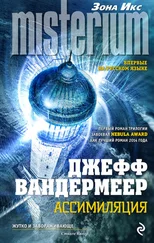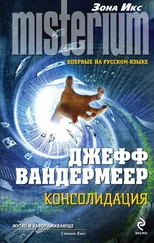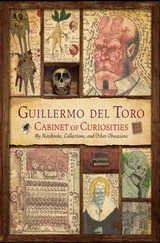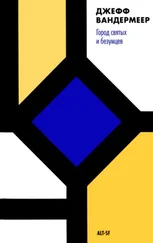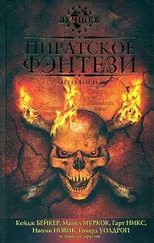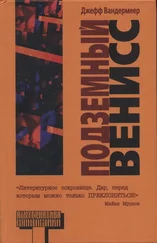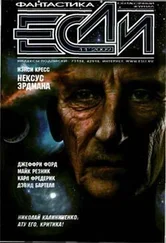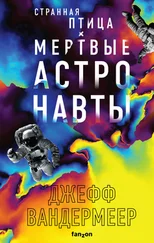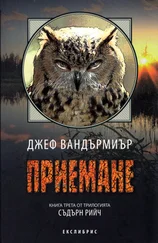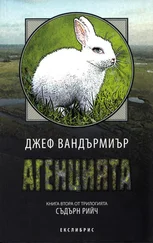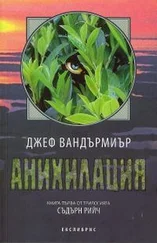Джефф Вандермеер - The Thackery T. Lambshead Cabinet of Curiosities
Здесь есть возможность читать онлайн «Джефф Вандермеер - The Thackery T. Lambshead Cabinet of Curiosities» весь текст электронной книги совершенно бесплатно (целиком полную версию без сокращений). В некоторых случаях можно слушать аудио, скачать через торрент в формате fb2 и присутствует краткое содержание. Жанр: Фэнтези, на английском языке. Описание произведения, (предисловие) а так же отзывы посетителей доступны на портале библиотеки ЛибКат.
- Название:The Thackery T. Lambshead Cabinet of Curiosities
- Автор:
- Жанр:
- Год:неизвестен
- ISBN:нет данных
- Рейтинг книги:5 / 5. Голосов: 1
-
Избранное:Добавить в избранное
- Отзывы:
-
Ваша оценка:
- 100
- 1
- 2
- 3
- 4
- 5
The Thackery T. Lambshead Cabinet of Curiosities: краткое содержание, описание и аннотация
Предлагаем к чтению аннотацию, описание, краткое содержание или предисловие (зависит от того, что написал сам автор книги «The Thackery T. Lambshead Cabinet of Curiosities»). Если вы не нашли необходимую информацию о книге — напишите в комментариях, мы постараемся отыскать её.
The Thackery T. Lambshead Cabinet of Curiosities — читать онлайн бесплатно полную книгу (весь текст) целиком
Ниже представлен текст книги, разбитый по страницам. Система сохранения места последней прочитанной страницы, позволяет с удобством читать онлайн бесплатно книгу «The Thackery T. Lambshead Cabinet of Curiosities», без необходимости каждый раз заново искать на чём Вы остановились. Поставьте закладку, и сможете в любой момент перейти на страницу, на которой закончили чтение.
Интервал:
Закладка:
3. Solidified puddle of gold, three feet in diameter. Found on first floor; chamber 18.
Discovered in a typically oversized arena-like construction (which once more appears to be a massively expanded version of a site existing on the bottom floor), this smooth and flat ellipse of precious metal is reputedly a pool of scabbed, coagulated blood remaining from a brawl between two of the so-called Builders that are to be found amongst the structure’s wildly variegated populace. According to reliable accounts, the Builders, upon this occasion, were perceived as being well over a hundred feet in height and were each armed with a proportionately massive snooker cue, their altercation having started in a nearby gaming parlour given over to the play of “trilliards,” apparently a form of billiards undertaken by four players upon an impractically vast table with perhaps a thousand balls but just four pockets, situated at the corners. It would seem that local trilliards champion “Mighty Mike” emerged victorious from the colossal scrap, but since both combatants were wounded in the course of the engagement, it is not known from which Builder this specific pool of priceless blood was spilled.
4. Unusual fungal growths, found on ground floor in chamber 4; found widely distributed across first floor with specimens discovered in most of this second storey’s chambers.
This peculiar variety of fungus seems to be a type that roots itself in higher mathematical dimensions, with the actual growth protruding down into the three-dimensional continuum below, where they are sometimes fleetingly apparent to a human viewer, despite being perceived very differently from a lower-dimensional perspective.
When viewed in their own environment, these growths have an attractive radiating symmetry, at first glance looking like some complex, delicately coloured form of starfish. Upon close inspection, though, it is apparent that the fungal bloom has taken the appearance of an interwoven ring of tiny naked women, all joined at the head with a communal tuft of “hair” (usually red, but sometimes black or blond) protruding from the centre of this strange, symmetrical arrangement. The bodies and the faces of these exquisite homunculi are overlapped in something of the manner of an optical illusion, so that three eyes will share two separate noses and two sets of rosebud lips, and that two distinct torsos will have only three legs with one limb shared by both.
Therefore, seen from above, these “fruit” have the communal tuft of usually crimson fibres at their centres, with a ring of glittering miniature eyes arranged around it, then a ring of noses, then lips, breasts, navels, and even dots of fibrous “pubic hair” set at the junctions of the radiating petal “legs.” Turning the fungus over to inspect its underside, we have a scaled-down rear view of the conjoined female bodies with the decorative addition of small and translucent insect wings growing out from the beautifully sculpted miniature shoulder-blades. This would seem to explain why this form of the fungus is referred to as the “fairy” type, and would appear to represent the riper, more mature stage of the fungus’s development. In its colouration, this mature form is astonishingly naturalistic in its mimicry of the nude human body, with a slightly carmine flush in the minuscule “cheeks” and bright green pinprick irises in the unusually animated-looking ring of eyes. The subtly graded pinks and creams have an appearance that is almost appetising, and the scent detectable upon the specimen is sweet and heavy, having notes of cardamom.
This is not true of the fungal growth’s unripe or less mature form, known colloquially as the “spaceman” type. These growths are typified by a mildly unpleasant blue-grey colouring and an aroma that is sour and bitter, almost acrid. Rather than the visually pleasing ring of conjoined fairy figures found in more developed specimens, the miniaturised figures here are sinister and unappealing: spindly humanoids of no apparent gender, the smooth heads are disproportionately large and bulbous, and if these possess lips, ears, or noses, then these features are at best vestigial and practically unnoticeable. The eyes, however, are much bigger than those found in the mature and fully ripened “fairy” specimens, being a uniform and glassy black in colour, noticeably slanted and entirely lidless.
Where they are rooted on the building’s second level, these growths are entirely visible and tangible. In the one instance where a specimen was found upon the ground floor, it was hidden to the ordinary senses and appeared to only manifest itself in brief consciousness-spasms that afflicted certain individuals, causing hallucinations where the compound figures of the higher-dimensional growth were perceived as independent tiny females in the manner of a fairy visitation. It may be imagined that the less-mature “spaceman” variety might bring about comparable dreams or mirages, but with black-eyed goblins substituted for wing-sporting naked women.
On the structure’s upper floor, where the starfish-like blooms are easily detectable, they are known variously as Puck’s Hats, Bedlam Jennies, Hag’s Teats, or Mad Apples. It seems that the most important quality of these intriguing fungi is that they are the one foodstuff that such insubstantial and higher-dimensional beings as ghosts find edible. According to reports from these dimensionally displaced inhabitants of the unfinished structure’s second storey, while the ripe “fairy” variety are the most flavoursome and sought-after, the “spaceman” form may be resorted to at times for want of any other sustenance. In either instance, the growth’s “eyes” turn out to be small pips or seeds, hard and inedible, that must be spat out or excreted, thus ensuring that the growth . . . obviously not a fungus in the strict terrestrial sense . . . can propagate itself.
There are also reports that structures exist on some mezzanine level that’s halfway between the ground and first floors, these being effectively the “ghosts” of long-demolished public houses. In these, revenant drinkers are alleged to congregate in mutual enjoyment of a form of alcohol that can be by some means fermented from the fungus to produce a rough home-made concoction known as Puck’s Hat Punch. While enjoyably intoxicating in small quantities, it is believed that a prolonged exposure can wreak havoc with the mostly psychologically based “substance” of the phantom form, resulting in unstable physiologies that the sufferer will then have to endure perpetually. A local “character” known as Tommy Mangle-the-Cat is cited as evidence of this effect.
Down on the ground floor, where there may be many dozens of these growths existing undetected by the more prosaic population, it is said that the fungi prefer to root in places that have been associated either with intoxication or with mental illness. Public houses, drug dens, and, above all, psychiatric institutions are thus more than usually prone to infestation, and there have been anecdotal cases of the growths attaching themselves to a living human being’s head, where they can bloom unseen by all but the afflicted party, while that party’s consciousness is horribly afflicted by the visions that the fungus generates. Reportedly, Victorian patricide and fairy-painter Richard Dadd had an enormous “Puck’s Hat” sprouting from his temple and affecting his behaviour tremendously, while it remained predictably invisible to Dadd’s doctors and captors.
The display case containing these specimens appears to be empty, with its contents only viewable when situated on the structure’s upper level.
5. Miscellaneous; found upon both completed floors, in various chambers.
Читать дальшеИнтервал:
Закладка:
Похожие книги на «The Thackery T. Lambshead Cabinet of Curiosities»
Представляем Вашему вниманию похожие книги на «The Thackery T. Lambshead Cabinet of Curiosities» списком для выбора. Мы отобрали схожую по названию и смыслу литературу в надежде предоставить читателям больше вариантов отыскать новые, интересные, ещё непрочитанные произведения.
Обсуждение, отзывы о книге «The Thackery T. Lambshead Cabinet of Curiosities» и просто собственные мнения читателей. Оставьте ваши комментарии, напишите, что Вы думаете о произведении, его смысле или главных героях. Укажите что конкретно понравилось, а что нет, и почему Вы так считаете.

